Werewolf: Unpacking the basis of a legend
Unpacking the basis of a legend
Werewolf.co.nz December IssueOriginal Article
By Gordon Campbell
CD reviews tend to be consumer guides, a few paragraphs that boil the music down to a buy/don’t buy advisory note. At The Complicatist, we’re pointed in the opposite direction. Each month, this column features a song or album or genre that’s as complicated as anyone cares to make it be.
 Props to National Radio, for
reminding us that hip hop turned 30 years of age this year,
since it really has been that long since the Sugar Hill Gang
released “Rappers’ Delight” in 1979. Compared to the
relatively brief flameout time of punk and grunge, that’s
a pretty impressive example of creative endurance – even
though a fortnight ago in the New Yorker, the
magazine’s music critic Sasha Frere-Jones did try to make a case : for 2009 being
the year that hip hop finally atomized irretrievably, and
died.
Props to National Radio, for
reminding us that hip hop turned 30 years of age this year,
since it really has been that long since the Sugar Hill Gang
released “Rappers’ Delight” in 1979. Compared to the
relatively brief flameout time of punk and grunge, that’s
a pretty impressive example of creative endurance – even
though a fortnight ago in the New Yorker, the
magazine’s music critic Sasha Frere-Jones did try to make a case : for 2009 being
the year that hip hop finally atomized irretrievably, and
died.
To make that case, Frere-Jones took aim at a sitting duck – Jay Z’s majestically lazy Blueprint 3 album – and contorted the rest. I mean, you write an eulogy for rap by lamenting that Li’l Wayne’s Tha Carter III was “probably the last moment when hip-hop was both popular, and improbably weird.” But that was only last year, man !
Worse, Frere-Jones simultaneously praises Raekwon’s comeback album Only Built 4 Cuban Linx 2 for its urgency, and then disses it for being just like a 1990s Wu Tang album. That’s nonsensical – are you saying the Wu conventions are played out, or that they’re still vital ? Clearly, the latter. Sure, we can’t return to 1995 when Raekwon’s ghetto crack don universe was utterly fresh, but the new album revitalizes it so successfully it has to be regarded as a stern contender for best album of 2009. Not that the likes of Pitchfork will be inclined to accept that – the Antlers album is probably more their speed.
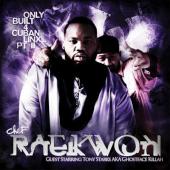 Thirty years on
though, is a convenient time to take stock. Obviously, in
the wider sweep of hip hop history there have been many
great singles and short term contributors. Yet for
argument’s sake, the list of hip hop’s revolutionary
artists with a body of work comes down to a fairly short
list : Public Enemy, NWA. Wu Tang Clan and J. Dilla. (
Run-DMC, Tupac and Eminem ? Almost there.) Of these, Dilla
is still the least widely known, despite his recent virtual
canonization. Last month, the release of the
Dillanthology 3 collection became one more item in
the flood of compilations, collaborations, previously
unreleased material and tributes that have poured onto the
market ever since James Dewitt Yancey died in 2006 from
lupus and the related blood disorder TTP, at the age of 32.
Thirty years on
though, is a convenient time to take stock. Obviously, in
the wider sweep of hip hop history there have been many
great singles and short term contributors. Yet for
argument’s sake, the list of hip hop’s revolutionary
artists with a body of work comes down to a fairly short
list : Public Enemy, NWA. Wu Tang Clan and J. Dilla. (
Run-DMC, Tupac and Eminem ? Almost there.) Of these, Dilla
is still the least widely known, despite his recent virtual
canonization. Last month, the release of the
Dillanthology 3 collection became one more item in
the flood of compilations, collaborations, previously
unreleased material and tributes that have poured onto the
market ever since James Dewitt Yancey died in 2006 from
lupus and the related blood disorder TTP, at the age of 32.
Whenever the gifted die young, it becomes difficult to separate the music from the mythology. Dilla had two children, but you wouldn’t know he even had a personal life – not from a mythology that depicts him as someone who lived entirely for the music, as producer and artist.
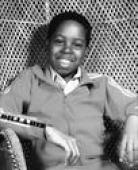 What we do know is
that he was born and raised in Detroit, and inherited a
great deal of talent and musical history from his parents.
His dad had been a jazz bassist, his mother an opera singer.
Since his death, Dilla’s mother has depicted him as a
prodigy with a set of skills that Mozart would have
struggled to match. In interviews, she has claimed Dilla
could ‘match pitch perfect harmony’ by the time he was
only two months old, to the astonishment of relatives and
family friends. Allegedly, he also began collecting records
at the age of two, and pretty much spent his teenage years
living in the basement, perfecting his production skills.
What we do know is
that he was born and raised in Detroit, and inherited a
great deal of talent and musical history from his parents.
His dad had been a jazz bassist, his mother an opera singer.
Since his death, Dilla’s mother has depicted him as a
prodigy with a set of skills that Mozart would have
struggled to match. In interviews, she has claimed Dilla
could ‘match pitch perfect harmony’ by the time he was
only two months old, to the astonishment of relatives and
family friends. Allegedly, he also began collecting records
at the age of two, and pretty much spent his teenage years
living in the basement, perfecting his production skills.
Finally, as the sickness took hold, he is also said to have put the final touches to his last album while in hospital, mixing it from his bed. That Donuts album – on which much of his reputation as an artist now rests - was released on his birthday, February 7, 2006, three days before he died.
Luckily, for anyone who hasn’t heard much of Dilla, the avalanche of material now available offers plenty of places to start. Too many places, perhaps. I’ve picked out some videos that I think showcase his skills as a producer and, in some cases, as a performer. Here we go:
1. “Got ‘Til Its Gone” by Janet Jackson. Visually, this is a striking showcase for the soundscape that Dilla created for JJ out of verbal fragments from the Joni Mitchell song “ Big Yellow Taxi.” ( I like the way the guy in the video breathes out the line ‘Joni Mitchell never lies’) Initially, Jam and Lewis took the credit - and the Grammy – for this effort, but all production praise belongs to Dilla, just then making his mark.
2. “The Light” by Common. This song is flat-out beautiful. “You don’t need a whole day / to recognize sunshine” indeed. Common’s finest moment, with inspiration from Erykah Badu. Basically, this is a re-imagining of the “ Open Your Eyes” song by 1980s white soul man Bobby Caldwell, over a drum sample from the Detroit Emeralds’ track “ You’re Getting a Little Too Smart.” Another favourite lyric : “You know I ain't the type to walk around with matchin’ shirts / [but] if relationship is effort, I will match your work…”
3. “Nothing Like This” by J Dilla Another good video, this one an animation created for a track from Dilla’s February 2003 album Ruff Draft. Again, the soundscape is spookily, unmistakably his own – few people have ever made such consistently creative use of space. There’s still some debate over the identity of the sample on this song ( mainly because its been chopped and played backwards ) but some maintain it to be “Peace of Mind” by Boston.
4. “The Red” by Jaylib. I first became aware of this on the Jaylib album Champion Sound, a collaboration between Dilla and Madlib. Even better, Dilla later recast it with Raekwon as the track called “10 Bricks” recently included on the Cuban Linx 2 album, and you can listen to that here in what is the definitive version of the rhythm. Great work successively by Raekwon, Cappadonna (really lifting his game here ) before Ghostface comes in on the closing verse.
5. “Workinonit” by The Roots and J Dilla. The starkly unadorned version of this track featuring Dilla alone is on Donuts, but (a) Donuts is the kind of collage album that is almost sacrilegious to listen to if broken down to its component tracks, and (b) The Roots are usually worth checking out even if they decline a bit into self parody here, at the close. Even better, I strongly recommend this lovely fragment of the same song here as delivered by Dilla’s former compadre, Dwele.
6. “Lightworks” by J Dilla I know, I just said Donuts has to be heard in its full and seamless context, but this track is a good intro to that album’s wry and serenely confident universe. As others have noted, Dilla knew that his mortality meant he had to condense all the albums he would never make, into this series of sonic fragments. They’re like a scattering of diamonds. There’s also a pretty good expanded version of “Lightworks” available here by Q Tip and Talib Kweli. By the way, the sample on which “Lightworks” is based is taken from a piece by Raymond Scott (1908 –1994) who was an electronic music pioneer, jazz musician and influential composer for 1940s cartoons, alongside the better known composer Carl Stalling. Truly, Dilla listened to everybody.
That’s merely a hint of the body of music Dilla compiled over the course of ten years as a producer and performer – while working with Janet Jackson, De La Soul, D’Angelo, Busta Rhymes, Raekwon, Common, Pharcyde, the Brand New Heavies, the Roots, Erykah Badu etc etc. The guy just never stopped working. There were collaborations with Madlib, and albums under his own name – such as The Shining, and especially Ruff Draft and the masterpiece, Donuts. Since he died, Pete Rock has supervised the Jay Stay Paid album from a collection of largely instrumental Dilla beats, and there have now been the three volumes of the Dillanthology series, which have cherry picked all of the above.
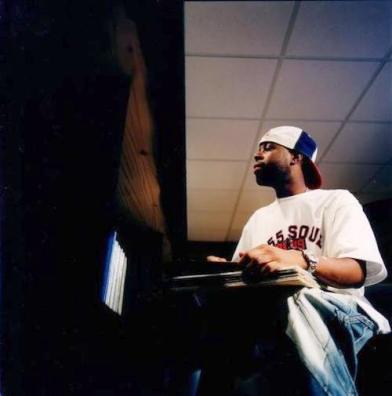 So what exactly made
him special ? In the Guardian a few months, the
British writer Simon Reynolds tried to explain what he calls “ The
Cult of Dilla.” starting with his own rite of initiation.
In his case, it was hearing “ Won’t Do” in a store, a
cut from the posthumous release The Shining. To
Reynolds, the case for Dilla comes down to three main
components : “ His way with a vocal sample, his way with a
beat, and his way with synths.”
So what exactly made
him special ? In the Guardian a few months, the
British writer Simon Reynolds tried to explain what he calls “ The
Cult of Dilla.” starting with his own rite of initiation.
In his case, it was hearing “ Won’t Do” in a store, a
cut from the posthumous release The Shining. To
Reynolds, the case for Dilla comes down to three main
components : “ His way with a vocal sample, his way with a
beat, and his way with synths.”
Interestingly, Reynolds spends a lot of time in his article not talking directly about Dilla at all, but about the role of quantising and so called ‘soft synths’ in today’s music. In Reynolds’ own words, quantising “is a procedure that makes rhythms perfectly regular and grooves superhumanly tight.” Supposedly, the gist of what Dilla did was “to avoid quantising and go for a looser, human feel, fitful and fallible, sometimes pushing "off-beat" to the edge of plain wrong.”
Well, much as I respect Reynolds, I’m not sure that’s entirely right. It could even be on the edge of plain wrong. Yes, quantising does enable the creation of regular, metronomic beats, but – and this is its secondary aspect – it also allows for its exact opposite, the re-humanising of digitally produced music.
The best explanation for this process that I know of was written by John Collier in his book about Ghanaian music, called Ghana : Changing Values : Changing Technologies, and I’m paraphrasing him here, from chapter eight. Initially yes, Reynolds is spot on : quantising does enable you to divide each musical measure into incredibly small metronomic beats, pulses and kicks, mainly by offering a more beat-accurate manipulation of what is being transmitted via MIDI protocols from a musical keyboard or drum machine.
The interesting thing is that does so by applying percentages, and that very specificity is what also allows hints of human time-keeping to be programmed back into the process. Visually of course, whenever robots try to approximate human attributes, a so called ‘ uncanny valley’ of repugnance quickly kicks in, the closer that the robots get to human form - but this doesn’t seem to happen with sound. Maybe the repetitions of rhythm foster our acceptance.
Whatever the psychological mechanisms….as Collier says, quantising creates what some have called a ‘feel spectrum’ for loosening up digitally sequenced music, because the precise settings enable the drum machine to be set for instance, a few milliseconds behind, or in front of, the metronomic pulse – with results similar to what a fallible human drummer might do. The potential then, is for what some have called “degrees of swing” – which allow the duration of the played drum note to fill in varying percentages of the spaces between the digital pulses. Pretty crucial in hip hop – whose inclinations to swing and syncopation, as Sasha Frere-Jones says in his New Yorker article, still render it a closer relative to ancient New Orleans bounce than to the four on the floor thump of techno, rave and its other clubbing cousins.
So did Dilla quantise? That seems like a question only a hopeless nerd could angst about – but it goes to the heart of the revolutionary feel of the rhythm tracks he created. The official mythology says no, he didn’t. In the Wikipedia entry on D’Angelo’s Voodoo album for instance, one of his co-contributors Questlove describes his unique method in these terms : "He makes programmed stuff so real, you really can’t tell it’s programmed. He might program 128 bars, with absolutely no looping or quantizing ..” Yet, keep in mind that point about programmed music so real you can’t tell it has been programmed.
Because, in line with what Collier says above, the Wiki entry on Voodoo also says : “One of the characteristics of the drumming style implemented during recording for the [Voodoo] album is its adherence to human timing, as the tracks were mostly programmed mechanically during recording, therefore resulting in the album's intentional sloppiness.” In a subsequent interview, Questlove elaborated on the purpose and intent of deliberately programmed imperfection :
"We wanted to play as perfectly as we could, but then deliberately insert the little glitch that makes it sound messed up. The idea was to sound disciplined, but with a total human feel….When we did a song for D'Angelo's record that Lenny Kravitz was supposed to play on, Lenny said, 'I can’t play with this — there’s a discrepancy in the drum pattern.' And we’re like, 'It's supposed to be this way!'
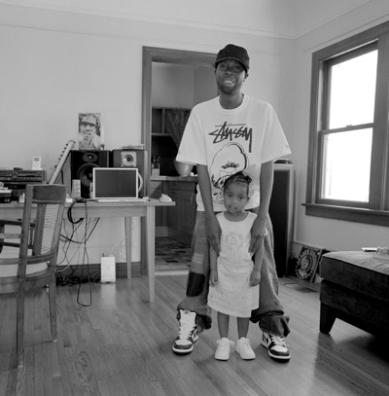 Those re-humanising
gambits were the games at which Dilla was the acknowledged
master. I can’t tell for sure, but my guess would be that
he didn’t avoid quantising entirely – for more than a
decade quantising and dithering ( a related distortion
reduction process ) have been virtually inescapable at the
recording industry level at which Dilla commonly operated.
What he did do was exploit its secondary potential for
recreating a sense of human warmth and immediacy in highly
processed digital music. What we’ve been left with are
his versions of the “boom bap” that Reynolds brilliantly
describes here :
Those re-humanising
gambits were the games at which Dilla was the acknowledged
master. I can’t tell for sure, but my guess would be that
he didn’t avoid quantising entirely – for more than a
decade quantising and dithering ( a related distortion
reduction process ) have been virtually inescapable at the
recording industry level at which Dilla commonly operated.
What he did do was exploit its secondary potential for
recreating a sense of human warmth and immediacy in highly
processed digital music. What we’ve been left with are
his versions of the “boom bap” that Reynolds brilliantly
describes here :
It's a phonetic evocation of hip-hop's classic drum pattern. The booms are the kicks, the bap is the snare, and the combination is that loping midtempo groove that tugs at your neck and your head, not so much at your hips or your feet. As it has developed in underground rap circles these last 15 years, boom-bap has come to refer to hip-hop for nodders and smokers. To backpackers it's the pulse of life itself, but to these ears, boom-bap strikes me as being as capable of being blandly formulaic as any other kind of beat. Dilla did his fair share of perfunctorily functional grooves, but at his most creative he deconstructed the rhythm, placing the booms and baps, hi hats and claps, in an off-relationship to each other, clustered too close or coming in too late, but always retaining a ghostly relationship to hip-hop feel.
So if you want one, you can take an inspirational spin from Dilla’s short life and large legacy : machines have the ability to enslave us, but genius will always find ways to exploit their potential to set us free again.
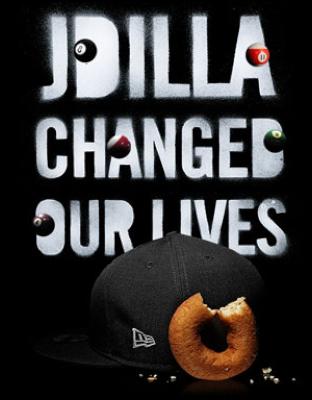
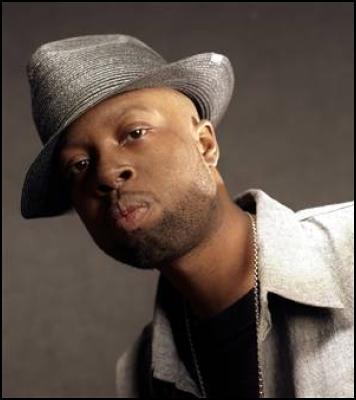
ENDS


 Gordon Campbell: On The Coalition’s Awful, Not Good, Very Bad Poll Results
Gordon Campbell: On The Coalition’s Awful, Not Good, Very Bad Poll Results Ian Powell: Policy Vacuum Enables For-profit Corporate General Practice Ownership By Stealth
Ian Powell: Policy Vacuum Enables For-profit Corporate General Practice Ownership By Stealth Gordon Campbell: On Iran Killing Its Rappers, And Searching For The Invisible Dr. Reti
Gordon Campbell: On Iran Killing Its Rappers, And Searching For The Invisible Dr. Reti Peter Dunne: MPs Unusually Quiet On Pay Rise
Peter Dunne: MPs Unusually Quiet On Pay Rise Ian Powell: Cuba And New Zealand: A Relationship Worthy Of Strengthening
Ian Powell: Cuba And New Zealand: A Relationship Worthy Of Strengthening Gordon Campbell: On bird flu, AUKUS entry fees and Cindy Lee
Gordon Campbell: On bird flu, AUKUS entry fees and Cindy Lee